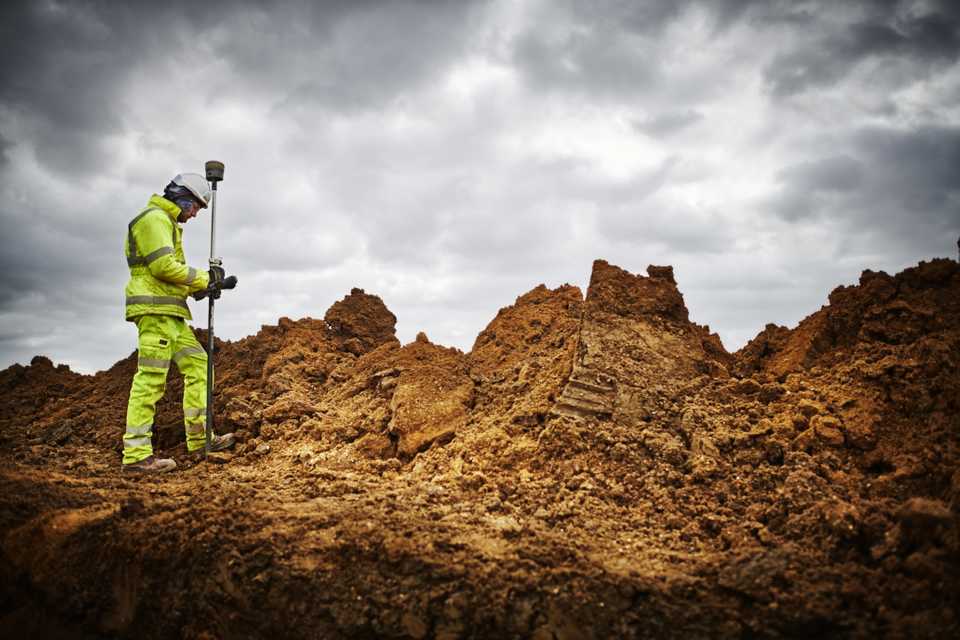Table of Contents
PEI Report Chapter 11 : Click Here
PEI Report Figures : Click Here
Glossary and Abbreviations : Click Here

This section summarises the preliminary assessment findings at this point in the EIA process for material assets and waste, based on PEI Report Chapter 11: Material Assets and Waste.
At this stage, the material assets and waste assessment within the PEI Report has been presented at a routewide level only. The ES will present the assessment findings at both an individual scheme and routewide level.
Baseline
Two interrelated study areas have been identified for the material assets and waste routewide assessment. The first study area (study area 1) is related to the area of the project where construction materials will be consumed, comprising the area within the draft DCO boundary. The second study area (study area 2) is related to the area where the main construction materials will be sourced and construction waste will be treated or disposed, comprising regions of the North East, the North West, and Yorkshire and The Humber.
Material Assets
The project will consume large quantities of materials increasing demand on the existing UK supply chain. The baseline includes the availability of assets including construction materials and aggregate reserves.
Cumbria County Council, Durham County Council and North Yorkshire County Council have all established a number of different types of Mineral Safeguarded Areas close to the project.
There are no existing peat resources sites (commercial peat extraction) present within study area 1.
Waste
Information from the Environment Agency has shown that there is waste infrastructure capacity available across study area 2.
Construction
Material Assets
With respect to material resources, the project's environmental impacts relate to the extraction of primary raw materials and the production of construction materials. The project also has the potential to constrain existing or future use and extraction of materials.
Sterilisation of mineral safeguarding sites and peat resources
Due to the number of Mineral Safeguarding Areas and mineral sites that cross or are in close proximity to the project, there is potential for the project to substantially constrain or prevent existing and potential future extraction of materials. Therefore, based on this preliminary worst-case scenario a large likely significant effect has been identified. The sterilisation of mineral sites will be assessed further in the ES.
The project will not sterilise any peat resources.
Importation of aggregates to site
The project has adopted a target that aggregates (raw materials) imported to site will have a recycled content of at least 31% as this is the regional percentage target set out in Highways England’s standards. The ES will set out the full detailed assessment of the likelihood of the project meeting this target.
Recycling and recovery rate of construction and demolition waste
Based on preliminary data, the recycling and recovery of construction and demolition waste across the project will not generate a likely significant effect (based on a minimum 70% target, as set out in the Waste Framework Directive, as it has now been incorporated into UK law). The ES will set out the full detailed assessment of the likelihood of the project meeting this target.
Waste
In terms of waste, potential environmental impacts are primarily related to the production, movement, transport, processing and disposal of waste from the project.
Waste infrastructure capacity in study area 2
Based on preliminary data, the assessment of future inert, non-hazardous and hazardous landfill capacity in 2024 has identified a slight and non-significant effect across the waste management infrastructure in study area 2. The waste management infrastructure will be assessed further in the ES.
Disposal of construction and demolition waste outside study area 2
Based on preliminary data, the project would not produce a likely significant effect in relation to the disposal of construction and demolition waste outside study area 2. The disposal of construction and demolition waste outside study area 2 will be assessed further in the ES.
Preliminary construction assessment
- Likely significant effects (construction) due to the potential to substantially constrain or prevent existing and potential future extraction of materials due to the number of Mineral Safeguarding Areas and mineral sites crossing and close to the project.
- Likely significant effects (construction) cannot be ruled out at this stage with regards to aggregates imported to site. The potential for likely significant effects arising from importation of aggregates with low recycled content will be assessed in the ES when more detailed information becomes available.
Operation
Material Assets
It is not anticipated that the project will consume material assets to a significant degree during its operation and therefore only the first year of operation has been included as part of the preliminary assessment.
It is anticipated that during operation, the material consumption will be substantially lower than during the construction phase. Therefore, based on preliminary data the project would not produce a likely significant effect in relation to material assets during operation. The operational material assets will be assessed further in the ES.
Waste
During the operation of the project, waste is expected to be limited. Therefore, only the first year of operation is included in the assessment to capture any effects arising from waste generated from the final phases of construction and handover, and assess any potential for effects arising from operational activities.
Based on preliminary data the project would not produce a likely significant effect in relation to waste during operation. The operational waste will be assessed further in the ES.
Preliminary operation assessment
- There would be no likely significant effects related to materials assets or waste during operation.